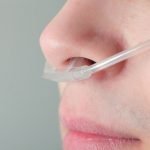House Cleaning and Handwashing Can Lower Exposure to Flame Retardants
Node Smith, ND
A recent study showed that cleaning your house frequently, and washing your hands may actually help lower your contact with flame-retardant chemicals.1 The study is from Columbia Center for Children’s Environmental Health (CCCEH) at Columbia University’s Mailman School of Public Health.
Flame retardants
Flame retardants are just one of the many unfriendly chemicals that are used to make our lives more convenient, safer, and more “user-friendly.” Flame retardants are used to reduce the risk of certain products catching, or staying on fire, and have been used since the 1970’s. Furniture, electronics and building materials are commonly treated with flame retardants, and certain clothing is also treated. There are various kinds of flame retardants – Halogenated flame retardants (also known as organohalogen flame retardants), containing chlorine or bromine bonded to carbon; organophosphorous flame retardants (OPFRS), containing phosphorous bonded to carbon. These compounds do not always adhere permanently to the products they are sprayed on, and eventually make their way into the air, animals, skin, and other things that come into contact with them.
Handwashing and house cleaning study
The study looked at a common OPFRS, Tris (1,3-dichlorisopropyl) phosphate, known as Tris, and 6 other flame retardants. The Environmental Protection Agency (EPA) actually does recommend taking steps such as handwashing and dusting with moist cloth, wet mopping and vacuuming in order to reduce flame retardant exposure. To determine the effectiveness of these practices, researchers designed a study that looked at both handwashing and house cleaning. 32 women were enrolled in the study. Each participant was assigned to one of the two interventions for one week. During the second week of the study, participants were asked to do extra handwashing and house cleaning. Urine samples were taken before the study began, and at one and two weeks.
Tris found in 97 percent of urine samples
Tris was found in 97 percent of urine samples. After the first week, there was a 47 percent reduction in Tris urine levels for the house cleaning group, and a 31 percent reduction for the handwashing group. Women with a higher than average exposure before the study began saw a 74 percent reduction following the week of housecleaning. During the second week, when participants were asked to do both house cleaning and handwashing, the Tris levels fell 43 percent below baseline levels.
Source:
- Gibson EA, Stapleton HM, Calero L, et al. Flame retardant exposure assessment: findings from a behavioral intervention study. Journal of Exposure Science & Environmental Epidemiology; 2018.
Image Copyright: <a href=’https://www.123rf.com/profile_lovelyday12′>lovelyday12 / 123RF Stock Photo</a>
 Node Smith, ND, is a naturopathic physician in Portland, OR and associate editor for NDNR. He has been instrumental in maintaining a firm connection to the philosophy and heritage of naturopathic medicine among the next generation of docs. He helped found the first multi-generational experiential retreat, which brings elders, alumni, and students together for a weekend camp-out where naturopathic medicine and medical philosophy are experienced in nature. Four years ago he helped found the non-profit, Association for Naturopathic ReVitalization (ANR), for which he serves as the board chairman. ANR has a mission to inspire health practitioners to embody the naturopathic principles through experiential education. Node also has a firm belief that the next era of naturopathic medicine will see a resurgence of in-patient facilities which use fasting, earthing, hydrotherapy and homeopathy to bring people back from chronic diseases of modern living; he is involved in numerous conversations and projects to bring about this vision.
Node Smith, ND, is a naturopathic physician in Portland, OR and associate editor for NDNR. He has been instrumental in maintaining a firm connection to the philosophy and heritage of naturopathic medicine among the next generation of docs. He helped found the first multi-generational experiential retreat, which brings elders, alumni, and students together for a weekend camp-out where naturopathic medicine and medical philosophy are experienced in nature. Four years ago he helped found the non-profit, Association for Naturopathic ReVitalization (ANR), for which he serves as the board chairman. ANR has a mission to inspire health practitioners to embody the naturopathic principles through experiential education. Node also has a firm belief that the next era of naturopathic medicine will see a resurgence of in-patient facilities which use fasting, earthing, hydrotherapy and homeopathy to bring people back from chronic diseases of modern living; he is involved in numerous conversations and projects to bring about this vision.










